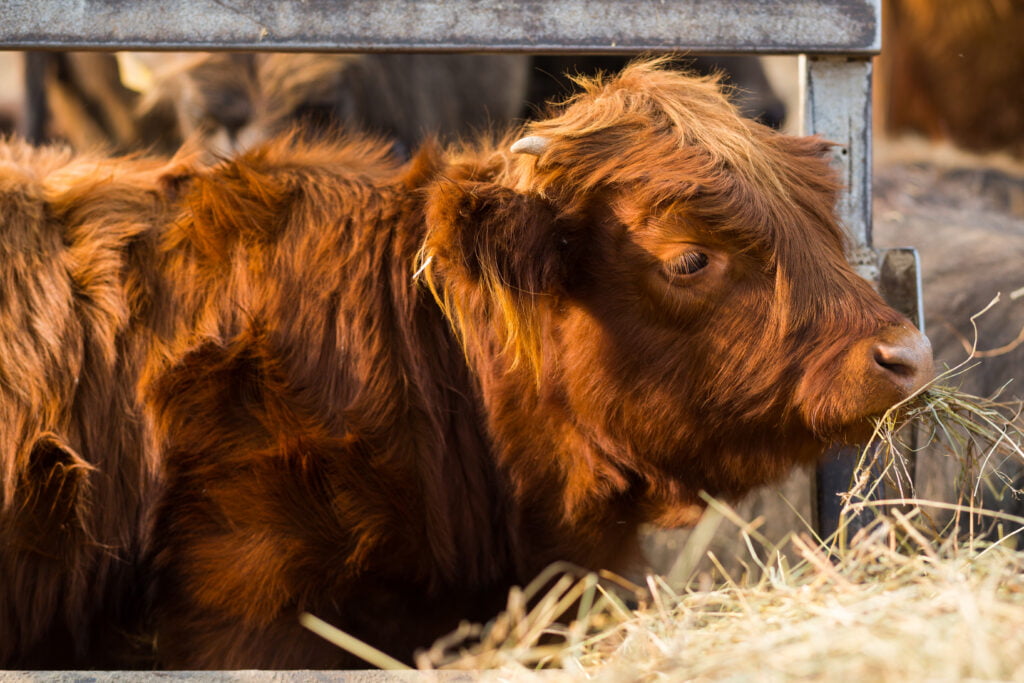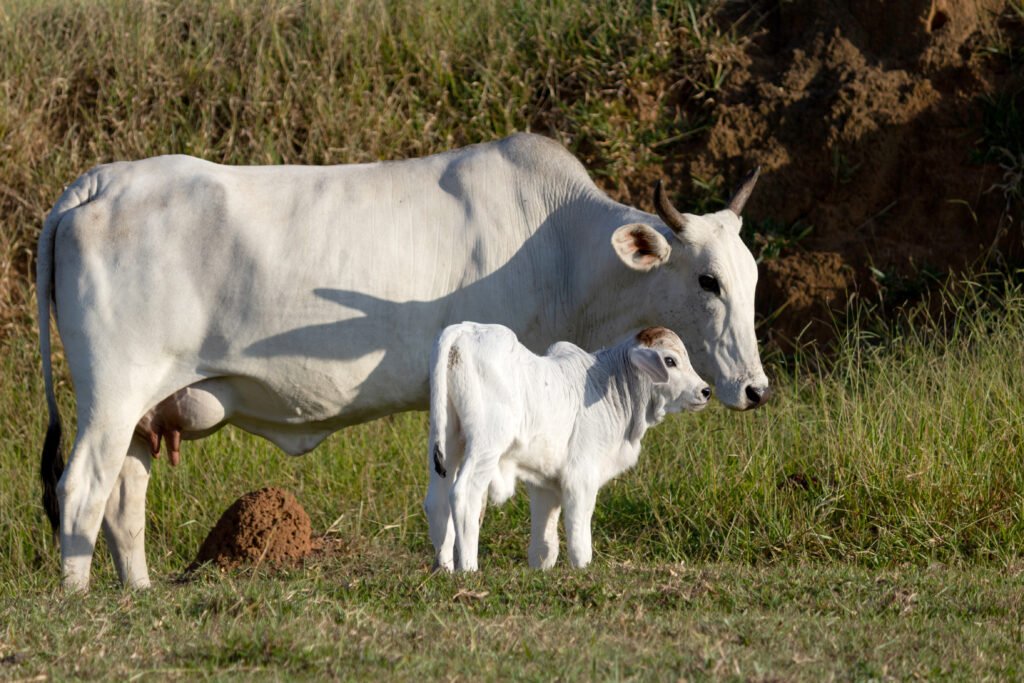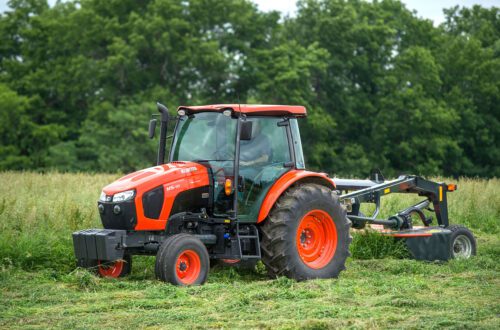Cows on a Farm – The Ultimate Guide
When we think of cows on a farm, our minds often go straight to the idea of fresh milk and cheese. But cows offer so much more than that! The benefits they bring to our society are countless. Cows provide us with essential nutrients like protein, calcium, and other vitamins and minerals that help keep us healthy and strong. They can also provide warmth during the colder months thanks to their thick coats of fur. Cows have been known to be great companions for farmers as well; providing emotional support when it’s needed most.
Not only do cows benefit humans but they’re also beneficial for the environment too! Their manure is an excellent fertilizer for plants and crops; helping them grow bigger and healthier than ever before.
Cows on a Farm – Where to Start
Raising cows on a farm is an exciting prospect for any person looking to become more connected with their food. If you’re just starting out, there are a few things you need to know before diving in. Firstly, consider what type of cow you would like on your farm. Dairy cows are bred for their milk production and are usually large and docile in temperament, while beef cattle come in many shapes and sizes depending on the breed and purpose they were bred for.
When selecting your cows, be sure to check their health records carefully before bringing them home – this is essential for ensuring your herd stays healthy over time. Before introducing them to the new environment, make sure all of their vaccinations are up-to-date and that they have access to clean water as well as plenty of nutritious feed.
Types of Cows
If you’ve ever been to a farm, you know that cows are an integral part of the landscape. These huge animals are fascinating in many ways, with different breeds and sizes. It might surprise you to learn just how many types of cows there really are!
There are over 800 cow breeds out there, each unique in its own way. They’re divided into two main categories: beef and dairy. Dairy cows produce milk for human consumption, while beef cows provide meat for meals. Beyond these two categories, there are several other types of cows as well – ones bred specifically for draught work or even companionship. Some breeds have horns while others don’t. Some have long coats while others stay short-haired all year round. Finally, some come in a variety of colors from black and white to reds and browns.
Holstein Cows
Bovine beauty isn’t just limited to the show rings of state fairs and agricultural expositions. Everywhere you look, on farms across America, you find Holstein cows grazing in pastures, lounging near barns and providing farmers with a consistent source of dairy products. These cows are an integral part of American agriculture and have been since their introduction back in 1817.
Holstein cows are known for their black and white coloring. They’re also one of the most productive breeds when it comes to milk production. Some Holsteins produce over 25,000 pounds of milk per year! On top of that they’re incredibly hearty animals that can withstand a variety of climates. This is why they’re found on farms all over the country.
Black Angus
Black Angus is a type of cow that’s gaining popularity in today’s modern farms. These cows are valued for their hardiness and robustness. This makes them ideal for farmers who want to increase their production capacity. The Black Angus breed is originally from Scotland and has been around for centuries.
The cattle are known for their black coats, which make them stand out among other breeds on the farm. They’re also well-known for their large frame and impressive musculature. They’re often seen as one of the most handsome creatures on a farm! As an added bonus, they have short hair. This makes grooming easy so you won’t have to worry about too much upkeep or maintenance when it comes to taking care of your herd.
Black Angus cattle are ideal companions if you’re looking to raise some livestock on your property.
Red Angus
When you think of cows on a farm, one of the most common breeds is Red Angus. This is a popular breed for beef production. They are known for being hardy and the ability to perform in many climates. It’s also an excellent choice for farmers looking to increase their herd size quickly.
Red Angus cows are generally docile and easy to manage, making them ideal for small-scale farming operations. They’re also relatively economical compared to other cattle breeds, so they make great sense when it comes to budgeting resources. Many farmers have found that they can get more bang for their buck with Red Angus over other breeds.
They typically yield high-quality meat products as well. Due to their low body fat percentage they produce lean cuts that are full of flavor no matter how they’re cooked or prepared.
Hereford
These docile animals are easily identifiable by their red body with white faces. They have a thick coat that can handle extreme temperatures, making them ideal for many climates.
These cows are often used in beef production due to their high fertility rate and good carcass quality. In addition to being well-suited for food production, Hereford cows have been recognized as some of the best mothers when it comes to rearing healthy calves. Farmers appreciate these animals’ calm nature and friendly personalities which make them easier to work with than other breeds.
Hereford cows can also be used for dairy production, since they provide a generous amount of milk with a balanced fat content.
Highland
Highland cows are an iconic farm animal that can be spotted in many rural parts of the world. These shaggy-haired bovines stand out in a crowd, with their long horns and distinctive coats of fur.

The gentle giants originated from the Highlands of Scotland. However, today they can be found on farms all over the world. They thrive in cooler climates and are hardy enough to withstand cold winters and wet summers alike. Highland cattle have become popular among small farmers due to their low maintenance requirements and ability to convert coarse vegetation into nutritious milk or meat.
These cows boast a unique look that sets them apart from other breeds. This makes them a must-have for any farm looking for something special!
Jersey
Have you ever wanted to get up close and personal with cows on a farm? Then you should consider checking out Jersey cows! These gentle giants are the ideal cow for any beginner farmer or animal lover looking to provide a home for these lovable animals.
Despite their small size, they produce an abundance of high-quality milk, loaded with valuable proteins and minerals. This breed is well known for its longevity and hardiness. This makes them an easy choice for anyone looking to start a small farm.
The Jersey cow also has an incredibly friendly personality that sets it apart from other breeds. They’re known to be docile and curious animals who enjoy interacting with humans. They are the perfect companions if you’re in need of some bovine company!
Limousine
There’s a certain mystique surrounding cows, especially those that roam on open pastures. However, few know the breed of cow responsible for many premium cuts of beef. Limousin cows are among the most prized bovine livestock in the world. They are becoming increasingly popular on large farms across America.
Limousin cattle were first developed in France during the 1800s and can be identified by their muscular bodies and large horns. As with any other breed of cow, they’re social animals who like to roam freely in open pastures. These cows also produce some impressive results when it comes to beef production.
Brahman
The Brahman is a breed of cattle that has been around for centuries. They are also popular on farms all around the world. Made famous in India and Southeast Asia, this hardy bovine has made its way to many other climates as well.
Featuring a unique hump over their shoulders and distinct facial features such as large ears, these cows are known for their resilience and strength. They’re also quite docile creatures, making them an ideal choice for farms looking to raise livestock without too much fuss.
Brahmans can be found grazing happily on pastureland or tilling soil with their horns in fields all across the planet. While they may not look like the sleekest animal on the farm, they have plenty of advantages that make them desirable to owners worldwide!
Simmental
Cows on a farm are an important part of many country communities. The Simmental breed of bovine is a popular choice for many farmers, due to their excellent production qualities and hardy nature. Farmers have been raising this breed since the 1700s!
Simmentals are known for their medium-large body size, and the recognizable red or yellow coloration of their coats. They’re also well suited to any climate – they can handle hot temperatures just as easily as cold ones!
These cows are prized by farmers because they produce high quality milk, beef, and hides that can all be used in different ways. They’ve also been known to gain weight quickly if given enough feed and space. This makes them ideal when it comes time for slaughtering.
Brown Swiss
Cows on a farm are often associated with images of black and white Holsteins. However, there is another type of cow that can be just as useful to farmers—the Brown Swiss. These cows have become increasingly popular because of the range of benefits they offer.
The Brown Swiss has been around since the early 1800s in the Alps region. Its popularity began spreading worldwide during the late 19th century. As their name implies, these cows come in a variety of shades from light tan to dark brown. They have an impressive frame with plenty of strength and muscle. They’re also known for being even-tempered and gentle animals, which makes them easier to manage on farms than other breeds.
In addition to their size and temperament, the appeal for many farmers is that Brown Swiss cows produce milk with higher butterfat content than other dairy breeds.
Beefmaster
Beefmasters were developed in the 1930s by Tom Lasater. His goal was to create an animal that could thrive in a variety of different climates and pastures. By selectively breeding Hereford, Shorthorn and Brahman cattle, he created an animal with increased fertility, greater disease resistance, and higher meat quality—all wrapped up in a package of longevity and good temperament. These cows typically weigh between 1,000-1,400 pounds when fully grown. This makes them ideal for farmers looking to maximize their production output.
Feeding Cows on a Farm
Cows on a farm are quintessential for agricultural production. The way these cows are fed is crucial to their health, growth, and ultimately the success of the farm. Feeding cows on a farm involves providing them with a balanced diet that ensures they maintain their well-being and get all the nutrients essential for their growth.

It starts with understanding what cows feed on naturally in the wild – grasses, legumes and other plants. So, that you can try to replicate this as much as possible when feeding them on your farm. You should also include hay or silage in your cow’s diet. This will provide them with sufficient proteins and carbohydrates needed to sustain themselves.
Different Types of Hay
When you think of cows, the first thing that comes to mind is hay. But what’s the difference between all these types of hay? On a farm, it’s essential to feed your cows the right kind of hay in order to keep them healthy and strong. For those new to owning livestock, understanding which type of hay is best for your animals can be confusing.
The most common types of hay on a farm are alfalfa, timothy, orchard grass and brome. These varieties have different nutritional values and uses depending on their age when harvested and how they were stored.
Alfalfa
Alfalfa is generally considered to be the highest-quality forage for cows because it contains more protein than other forms. However, it can also be expensive compared to other hays. It is harvested when the plant is young and is often used as a “green” hay. This means it still contains high moisture content. It should be fed to cows that are pregnant or lactating, as well as those who are in heavy-work rations.
Timothy
Timothy hay has been used as feed for livestock since ancient times. Its popularity remains unchanged today due to its superior nutritional value. It’s composed of small stems containing leaves which are extremely high in fiber content. This makes it easier for cows to digest than other types of grasses. Additionally, timothy hay also contains large amounts of calcium and phosphorus. Both of which strengthen bone structure in cattle. A must-have when you have a herd of cows grazing around your farm!
Orchard Grass
Orchard grass is an excellent quality forage for cows of all ages and classes. It’s nutrient-rich and helps sustain healthy cow growth and development. Plus, it’s easy to find and relatively affordable. This makes it an attractive choice for farmers everywhere.
This type of hay has long, thin blades with a soft texture that tastes great to cows. As they eat the hay, they can get essential vitamins and minerals such as calcium, protein, phosphorus, potassium, magnesium and sodium. Orchard grass hay also tends to be higher in fiber than other types of hay which helps keep cows full longer between meals and prevent overeating.
Plus, orchard grass hay is known for its natural sweet taste which cows tend to love—that means more satisfaction for your bovine friends!
Fescue
Made from grasses such as tall fescue, orchard grass, and ryegrass, fescue hay provides cows with essential nutrients that help keep them in top shape. It’s high in fiber and protein which can help boost milk production for dairy farmers, plus it’s easy to store since it dries quickly. Fescue hay also helps keep cows full longer since its high digestibility rate allows their bodies to extract more nutrients per bite than other types of hay.
Breeding Cows on a Farm
Raising cows on a farm is an age-old tradition that is still popular today. From commercial farms to small family farms, cows are essential for producing dairy products, meat and leather. Breeding cows on a farm requires knowledge of the animal’s biology and health needs, as well as careful management of resources.
When it comes to breeding cows, farmers must take into account the cow’s age and weight before mating her with a bull. Farmers should also consider the lineage of both animals to avoid congenital issues in their calves. Additionally, farmers need to make sure they have enough food sources available for their cattle and that they maintain good pasture practices, so their herd remains healthy and strong. Cows should be monitored closely during gestation as well. Farmers need to watch out for any signs of distress or illness in order to provide proper care throughout the pregnancy period.

Artificial Insemination
Artificial insemination is a common farming practice used to increase the efficiency of breeding cows on a farm. The process involves using technology to insert semen into the cow’s uterus, instead of relying on natural mating methods. This tactic has been proven to produce numerous benefits for farmers, including increased milk yields and higher-quality offspring.
The process of artificial insemination is fairly simple and can be done quickly with minimal effort. A veterinarian or experienced farmer will collect semen from a selected bull and then insert it directly into the cow’s uterus through an AI gun device. Once complete, farmers can expect the calf to arrive nine months later. In addition to improving the quality of cattle bred on farms, artificial insemination also helps reduce costs associated with bulls that are typically needed for traditional breeding methods.
Health Care for Cows on a Farm
Cows are one of the most important animals on a farm. Not only do they provide us with food, but their well-being is also essential for a healthy and successful operation. Taking care of cows is an absolute must, and that includes providing adequate health care.
Taking care of the health of cows is no easy task. Regular checkups are necessary to ensure that your cows are healthy and free from any diseases or illnesses. Vaccinations and deworming should be done regularly to prevent any issues related to parasites or infectious diseases in the herd. Feeding them with nutritious foods and making sure that they have access to clean water at all times also goes a long way in keeping them healthy and happy.
Benefits of Keeping Cows on a Farm
If you’re a farmer looking to make the most of your land, there’s no better animal than cows. Cows are not only an important part of the traditional farm, but they also provide many practical benefits. Not only do they produce a constant flow of milk and meat, but they can also be used in other ways that can really help out a farm.
For starters, having cows on your property is an excellent way to keep grass trimmed as well as fertilize the soil naturally with their droppings. This helps create healthier pastures for your herd while keeping weeds away – all without using chemicals or pesticides! Additionally, if you have enough grazing pasture for them, you won’t need to buy hay or other feed sources from outside vendors which saves money and reduces waste.
Final Thoughts – Cows on a Farm
As cows are often seen as an iconic representation of the rural landscape, many people will have fond memories of seeing them grazing in pastures on a farm. For those who live close to a farm and are lucky enough to regularly observe these animals, they may be able to appreciate their unique personalities and behavior.
Cows on a farm are contented creatures that spend much of their day lazily eating grass and taking breaks in the shade during hot summer days. They also enjoy interacting with each other – cows can be seen grooming one another or simply standing nose-to-nose sharing secrets. Farm visitors should take care not to disturb them and allow them the space they need to graze undisturbed – it’s how they like it!
image sources
- : Freepik







2 Comments
Pingback:
Pingback: